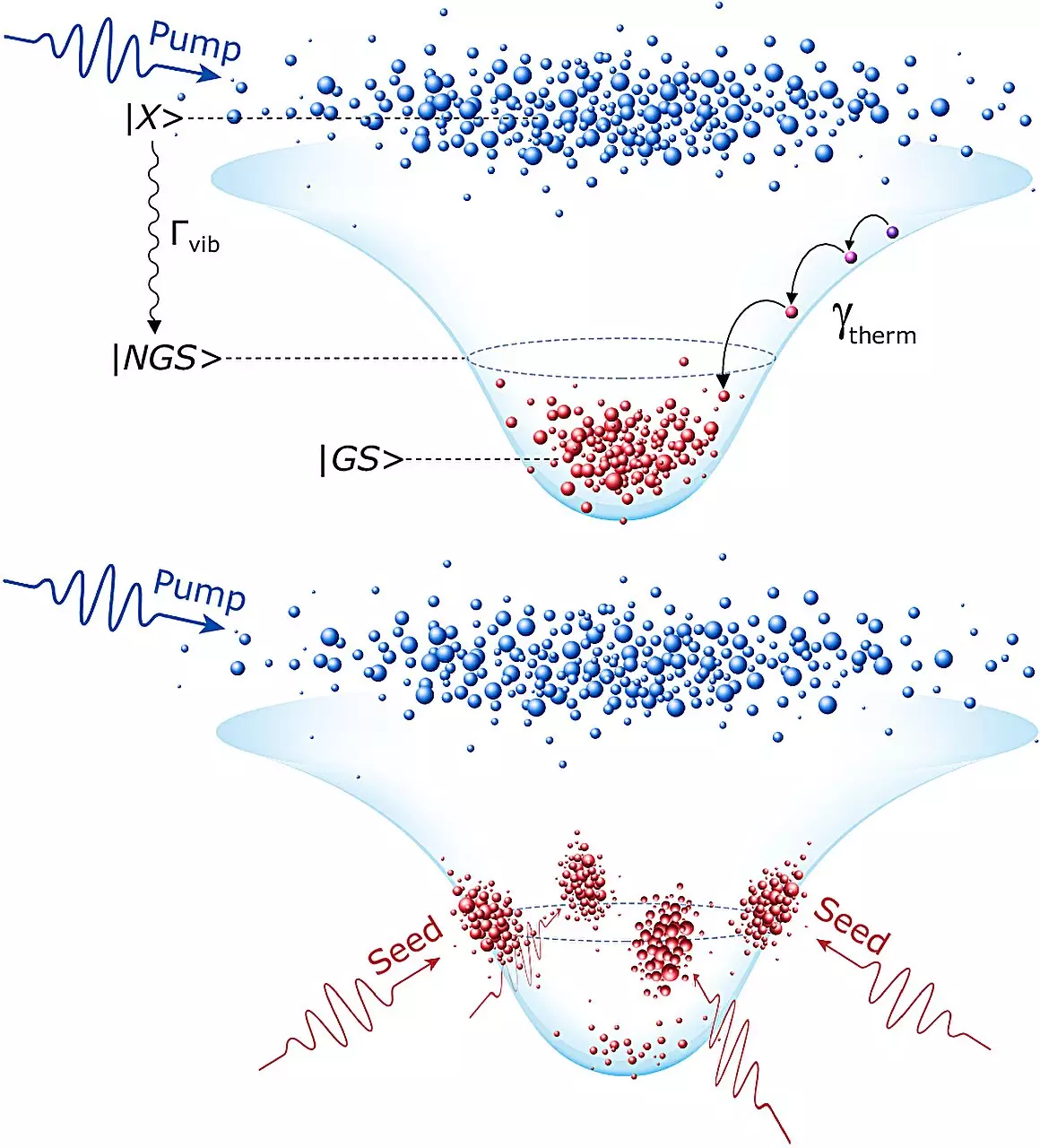The dawn of optical computing is upon us, promising a future where machines process information at unfathomable speeds and with unprecedented efficiency. A recent study conducted by a collaborative research team from Skoltech and Bergische Universität Wuppertal has achieved a groundbreaking milestone: the development of a universal NOR logical element that operates through the manipulation of polariton condensates. This advancement is more than just a technical achievement; it fundamentally alters our understanding of how computing can be reimagined, moving away from traditional electronic systems towards a new paradigm rooted in photonics.
The Wonders of Polariton Condensates
Polariton condensates, often termed as “liquid light,” exhibit remarkable characteristics that make them ideal for optical applications. By condensing polaritons into a state where they amplify weak optical signals exponentially, researchers can leverage this phenomenon to create a logic gate capable of handling complex computations. Unlike conventional transistors, which face severe limitations in speed due to their reliance on electrical currents, polariton logic elements can potentially operate at frequencies reaching 1 THz—approximately several hundred times faster than their electronic counterparts.
Denis Sannikov, the pivotal figure behind the study, emphasizes this transformative approach by highlighting the historical constraints of electronic processors. He notes that, since the 1980s, manufacturers have been pushed to raise processing frequencies to enhance performance, only to encounter the perplexing challenge of thermal limits, effectively turning processors into “electric heaters” at high speeds. In contrast, the dual-mode capability of polariton transistors breaks these barriers, providing a viable route to non-heating, high-speed computing.
Scaling Up with Multiple Inputs
One of the most exciting aspects of the new universal NOR gate is its ability to manage as many as 12 inputs simultaneously. While traditional electronic logic gates typically range from 2 to 8 inputs, this innovation opens the door to more intricate computations. The symmetrical advantages in information processing mean that advanced algorithms and artificial intelligence could flourish, unbound by the constraints of current digital architectures.
Moreover, the cascading nature of these optical gates allows multiple components to be interconnected, producing a layered network that enhances the complexity and performance of computational tasks. This aspect mirrors the design philosophies used in today’s electronic computing, yet it amplifies potential dramatically by sidestepping power-hungry electrical systems.
The Promise of Optical Logic Gates in Future Technologies
The implications of these findings reach far beyond mere academic curiosity; they are harbingers of the next generation of computational technology. The research indicated that these optical logic elements could pave the way for entirely optical chips capable of executing calculations without reliance on electric currents. This strategy not only promises reductions in energy consumption but may also facilitate a new era of sustainability in computing, where energy efficiency aligns harmoniously with performance.
Moreover, the tech industry has been rapidly evolving towards miniaturization and increased processing power. Optical computing, driven by innovations such as those from Skoltech and Wuppertal, promises to keep pace with these demands while providing enhanced capabilities that electronic systems cannot match. The allure of optical systems lies not only in their speed but also in their potential for integrative applications across diverse fields including telecommunications, artificial intelligence, and quantum computing.
Addressing Historical Challenges in Optical Computing
Despite the enthusiasm surrounding optical computing, it is essential to recognize the significant challenges posed by the nature of photons. Unlike electrons, which interact readily, photons tend to travel unperturbed, complicating the task of creating effective communication between optical logic gates. Sannikov and his team have made headway in this area by inventing a mechanism that allows the switching of an optical signal through light itself. This breakthrough may well be the key to resolving the long-standing dilemma of all-optical logic elements and could inspire a wave of future innovations.
Ultimately, the techniques developed in this research signify the beginning of a transformative journey toward optical computing supremacy. Through such advancements, the theoretical promises of light-based computing are inching closer to reality—a reality that could one day see us harnessing the power of light not just as a medium of communication, but as the very foundation upon which our computing systems are built.
As we look ahead, the continual progression in this field resonates with the burgeoning potential for optical logic gates. The juxtaposition of speed and energy efficiency creates a compelling narrative around the future of computation—a narrative that is increasingly defined by optics rather than electrons. The transformative future beckons, and it’s time we embrace this optical revolution.

